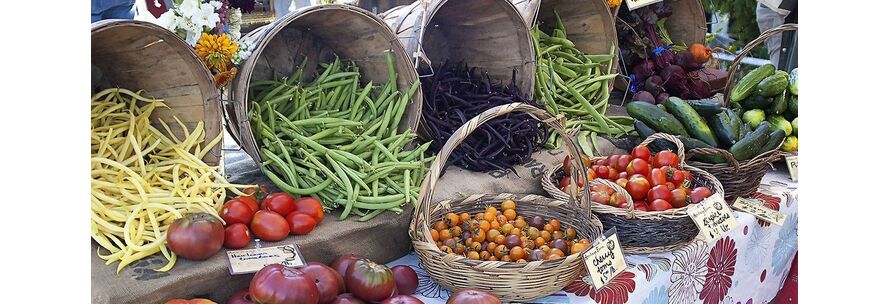Eating Seasonally

If you walk into most supermarkets or grocery stores, you’ll easily find a multitude of fruits and veggies, many of which are not in season. The U.S. food industry’s reliance on preservatives, pesticides, GMOs and various chemicals, would have you to believe that their shiny, same-size food is "fresh and healthy" when in reality, it’s far from it. Eating seasonally has gained more attention as nutritionists and physicians see its usefulness in helping patients maintain a healthy weight and optimal health. Although it is important to remember that before we had epidemics of diabetes, obesity, and heart disease, and before we began manipulating the current food supply, eating seasonally was the only way of eating. Aside from simply tasting better, eating seasonally provides many benefits economically, environmentally, and in terms of health.
Health Benefits of Seasonal Eating
In addition to the more rich, robust flavors found in seasonal foods, eating seasonally provides one with greater variety and nutritional value. The changing of the seasons exemplifies a natural diversity from one season to the next that provides our bodies with what we need during those months. It’s no coincidence that lighter, fluid rich fruits such as apples are found in late summer to re-hydrate the body, and vitamin C rich foods are found in the winter to fight against colds. Fresh produce contains many more antioxidants and vitamins as opposed to non-seasonal produce. Antioxidants and vitamins in produce deplete over time, therefore making non-seasonal produce less beneficial in providing hydration, immune defense, skin protection, etc. By eating seasonally, we rotate the various foods we eat from one season to the next. This keeps the body from becoming intolerant to the benefits of those foods.
Environmental Benefits of Seasonal Eating
Seasonal foods don’t have to travel across the globe to reach your plate. Less resources are needed to grow seasonal foods as opposed to non-seasonal foods. Seasonal foods not only reduce the fuel costs and carbon footprint involved in transportation, but they also don’t need unhealthy preservatives, waxes, or other chemicals to ensure their marketability. This protects the overall health of the soil and encourages responsible farming methods.
Economic Benefits of Seasonal Eating
The lower prices of seasonal food reflect the economic principle of supply and demand. The prices of seasonal foods will be lower simply because there is an abundance. Prices on seasonal foods are typically lower at supermarkets compared to local growers found at farmer’s markets. The extra money that is spent buying seasonal produce from small, local farmers compared to buying seasonal produce at a supermarket can benefit the entire community. Not only is it easier to find 100% organic, sustainably grown produce at a farmer’s market, it fosters a sense of community and supports the local economy.
Some Top Seasonal Foods for Fall:
- apples
- cranberries
- pumpkin
- squash
- beets
- carrots
- cabbage
- figs
- persimmons
- sweet potatoes
- mushrooms
Smart Planet Market offers small batch companies and farmer’s market vendors a place to advertise and sell their products year round with a free website. There is a "Shop Local" search bar at the top of every page and sellers can choose the "Local Pick-up Only" option if they cater only to locals with fresh produce, meat, livestock or craft items.
Check out the following links for more information on local, seasonal eating.
Useful Links:
sustainabletable.org has a seasonal food guide based on your state
blog.nclr.org offers another seasonal produce chart along with their specific health benefits
Health.com shares 15 top superfoods for Fall
Sources:
Comments
No posts found


















































































